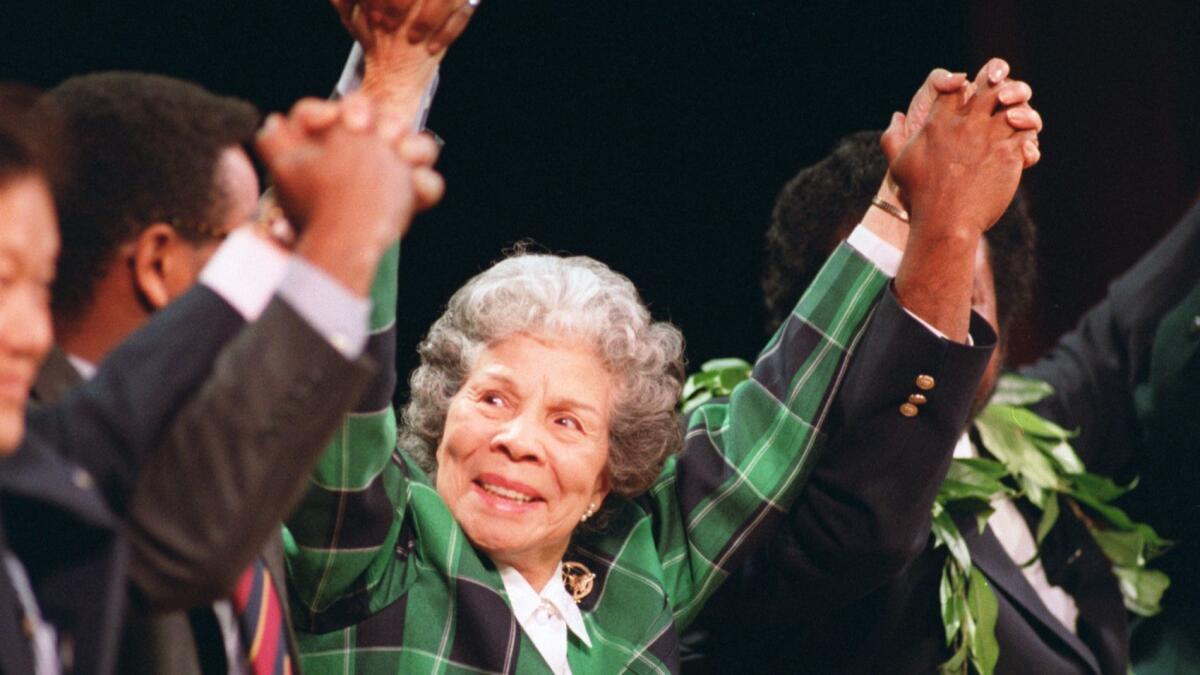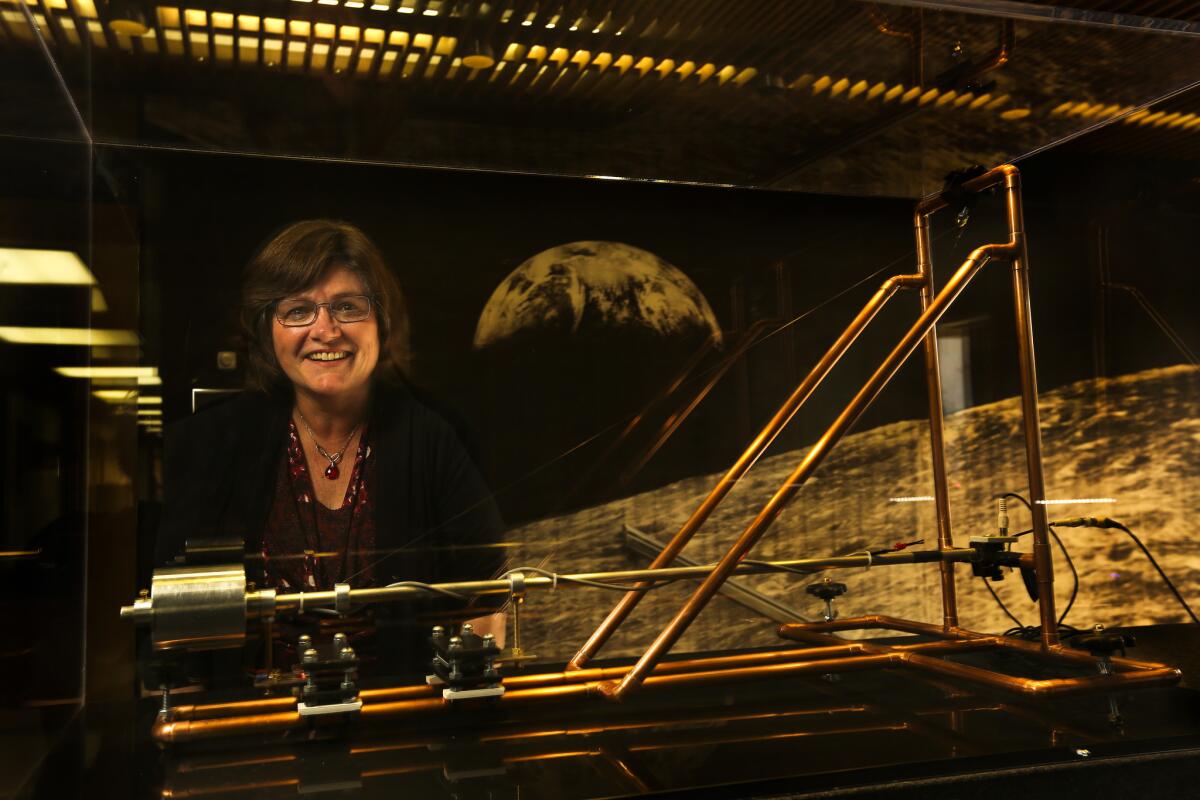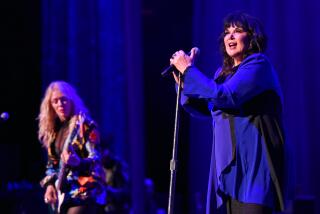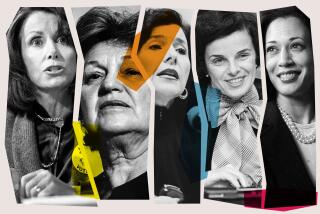On International Women’s Day, here are 8 L.A. women you should know
March 8 is International Women’s Day. The date has roots in political rebellion, and today is no different: It’s what the Women’s March organizers have designated the official “Day Without Women.”
L.A., like the rest of America, has a proud history of important women. Here are a few you should know.
Biddy Mason: Freed slave became a real estate mogul and church founder
Biddy Mason walked to California from Mississippi behind her master’s wagon. She met freed slaves in San Bernardino and went to court to win her freedom in 1856. She saved as much money as she could from her job as a midwife and bought plots of land in what is now downtown Los Angeles. She founded a daycare center and orphanage on the property and started running First African Methodist Episcopal Church of Los Angeles out of her home. The first building for the church was on another piece of property she owned. When she died in 1891, she was one of the wealthiest women in the city.
Charlotta Spears Bass: Journalist and vice presidential candidate
Born in 1875, Charlotta Bass was a pioneering journalist who became the owner, editor and publisher of the California Eagle, the longest continually publishing black newspaper on the West Coast. In 1952, at age 77, she became the first black woman to be nominated for vice president, on the Progressive Party ticket.
Mary Emily Foy: L.A.’s first female head librarian
In 1880, L.A.’s young library system was in need of a head librarian. The city found one in Mary Emily Foy, an 18-year-old whose wide-ranging knowledge made her the go-to authority for settling trivia bets at the bar downstairs from the library. She went on to become a teacher, Democratic Party leader and prominent suffragist.
Marilyn Jorgenson Reece: Freeway interchange engineer
The next time you’re sitting on the freeway interchange where the 10 meets the 405, think of the woman who designed it. Marilyn Jorgenson Reece was L.A.’s first civil engineer when she joined the State Division of Highways — later known as Caltrans — in 1948. (When asked why she went into civil engineering, her response was, “Well, I like mathematics, and I didn’t want to be a teacher.”) After her death in 2004, the interchange was renamed in her honor.

Aurora Castillo: Environmentalist and “La Dona” of East Los Angeles
During the Great Depression, Aurora Castillo’s parents worked long hours in a laundry. Her mother dreamed that her daughter would one day work as a bank teller. Instead, Castillo founded Mothers of East Los Angeles, an environmental justice group of Latina mothers who banded together to fight a proposed state prison in their neighborhood. The group also blocked construction of a toxic-waste incinerator and a hazardous-waste storage site. The great-great-granddaughter of Augustine Pedro Olvera, Olvera Street’s namesake, went on to win the Goldman Environmental Prize, known as the Nobel prize of environmentalists.
Sally Ride: Astronaut
Sally Ride answered an ad in the Stanford student newspaper looking for people to join the space program. More than 8,000 people applied that year. The L.A. native was one of the six women accepted. She started in the astronaut corps in 1979 and, in 1983, became the first American woman in space and the first to orbit Earth.
Lily Lee Chen: Mayor of Monterey Park
In 1981, Lily Lee Chen ran for City Council in Monterey Park — and lost by 28 votes. The next year, she ran again, walking door to door every night for three months. She won. The next year, she became the mayor of Monterey Park. The first female Chinese American mayor in the United States, she went on to serve with the Democratic National Committee.

Lucy Jones: California’s “Earthquake Lady”
Over the course of 33 years serving with the U.S. Geological Survey, Lucy Jones was called the Beyoncé of earthquakes. The Meryl Streep of government service. The “Earthquake Lady.” Thanks to her research and public advocacy, California is better prepared to withstand the next “Big One.” She retired from the USGS last year to take on even more ambitious projects.
ALSO
‘A Day Without a Woman’ for many means a day without school
Trump says women are ‘vital to the fabric of our society’ on International Women’s Day
How to make A Day Without a Woman more than just a gimmick
More to Read
Get the L.A. Times Politics newsletter
Deeply reported insights into legislation, politics and policy from Sacramento, Washington and beyond. In your inbox three times per week.
You may occasionally receive promotional content from the Los Angeles Times.











